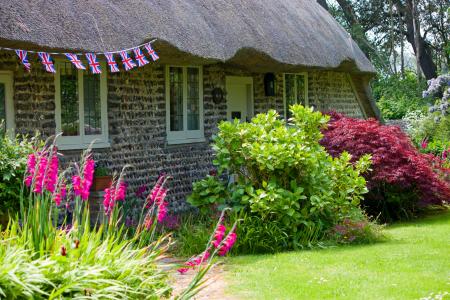Britain’s homes are shrinking and with it, so are our green spaces.
Homes today have halved in size compared to those built in 1920, and the
average British garden has shrunk from 168 metres squared to just 163.2
metres squared between 1983 and 2013.
 On top of this, more than two million British homes don’t have gardens according to 2010 figures, which also predicted that by 2020, some 10.5 per cent of homes would not have a garden. This is not good news in light of research that suggests children with no access to gardens are 38 per cent more likely to become obese.
On top of this, more than two million British homes don’t have gardens according to 2010 figures, which also predicted that by 2020, some 10.5 per cent of homes would not have a garden. This is not good news in light of research that suggests children with no access to gardens are 38 per cent more likely to become obese.
However, it’s not just size or access to our gardens that has changed. Instead, the entire approach to gardening in the UK has shifted as different materials have come into usage – from synthetic living spaces such as decking to actual gardening tools like fertiliser, which was originally organic. Some of the first things to change were:
- Plant pots: Originally made from clay, pots are now generally plastic or biodegradable.
- Fertiliser: Once, fertiliser was entirely organic. However, chemicals have now been developed to serve as fertiliser – although many gardeners prefer organics.
- Lawn mowers: Originally, grass cutting relied on a manual process. Early machinery was developed in the 1900s which saw early versions of cylinder mowers powered by pushing. Now, electric-powered motors mean gardens are far easier to maintain.
- Materials: Gardening still employs the same basic materials it always did: stone, clay, timber and soil. Now, however, we use plastic, concrete and stainless steel – which was invented in 1913.
The actual way we approach our gardens has changed too. During the Second World War, gardens became areas for growing food to supplement rationing, but also an area of refuge for those who’d build their own bomb shelters. In the 1950s, gardeners shrugged this sensibility off and focus shifted towards ornamentation and decoration, placing more attention on manicured lawns and neatly trimmed shrubs.
The late 50s and early 60s saw the rise of garden centres, with the first in Britain set up in Ferndown, Dorset in 1955 – forever changing the way British gardeners cultivated plants. This widespread availability of plants meant heathers, conifers and bedding plants became popular.
However, the 70s counterculture movement also changed the way we garden, placing attention back on the idea of self-sufficiency and growing your own. Colour TV’s invention also saw the widespread airing of gardening programmes.
The 80s saw gardens become more recognisable to modern Brits, with a rise in recreation in the garden. BBQs and conservatories grew in popularity. By the 90s, this movement became more about the ‘makeover’ – with many people installing decking as a fast, affordable way to create a living space in their gardens.
The rise of the internet in the 2000s has changed gardening again. Now, information about growing and cultivating your own plants is everywhere, accessible through mobiles, desktops and tablets. A renewed focus on climate change and healthy eating has also meant more people are aiming to create sustainable gardens with minimal harm to the environment, using recycled materials in everything from plant pots to composite decking.
However, with garden spaces shrinking, how do we use the new materials and information available to get as much as we can from our gardens? For some, this means studying guides online and creating their own DIY fruit and vegetable gardens. For others, it means creating as much living space as they can in their shrinking gardens.

